LCSO Message of the Week 08/04/2023
Operational planning and debriefing major events is a crucial component to any law enforcement agency. The Lyon County Sheriff’s Office operational plan for a large scale event such as Night in the Country is taken very seriously. The after action report and debrief are taken seriously as well, and provide the opportunity for our Command Staff and Deputies to improve on our services, and abilities in future events.
The concert venue itself is in Lyon County, and the Lyon County Sheriff’s Office was responsible for law enforcement action taken inside of the concert venue. The campground is located within the City of Yerington, city limits and the Yerington Police Department was responsible for law enforcement action within the campground. Both agencies did assist each other in times of need.
Attached are the statistics for the event.
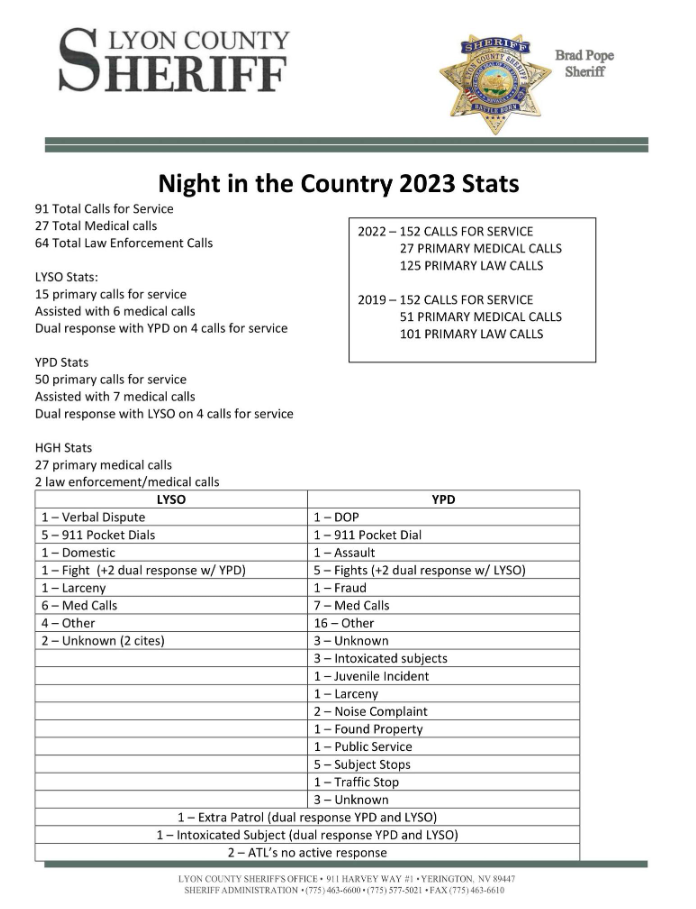
Commander Ryan Powell completed the after action report and several areas of it will be shared here. The entirety of the document cannot be shared due to sensitive law enforcement information not meant for public viewing.
The 2023 Night in the Country after action report.
Background:
The Night in the Country Music Festival has been an annual music festival in Yerington, NV for 22 years. During those years, the Lyon County Sheriff’s Office has conducted general law enforcement special event patrols and enforcement during the event. As the event has grown in size and attention, it has moved from the Lyon County Fairground Rodeo Arena, to the Lyon County Fairground event area, and the Yerington City grounds which circle the Fairgrounds. The Concert draws approximately 10,000+ people in attendance. In past years, the Lyon County Sheriff’s Office has responded to calls for fights, sexual assaults, battery, battery with deadly weapon, domestic violence, minor in consumption of alcohol, illegal drug related calls, theft and a multitude of other calls for service.
Mission:
The Lyon County Sheriff’s Office, and all available assets within, will provide law enforcement protection, oversight, communications, and emergency response for all Sworn and Non-Sworn agency personnel, as well as citizens engaged in special event activity, and all professional personnel engaged in the event planning and performance. Lyon County Sheriff’s Office personnel will have the ability to appropriately respond to all threats that may possibly affect the event.
Focus Areas:
1. Team: Coordination, collaboration, chain of command.
Lyon County Sheriff’s Office personnel worked with the following agencies for coordination of this event. Boys and Girls Club of Mason Valley, Yerington Mason Valley Fire Protection District, Yerington Police Department, Nevada Highway Patrol, Lyon County Emergency Management, Humboldt General Hospital, CSC Event Security, Lyon County Road Department, and Lyon County Information Technology Department. The majority of the collaboration of this event was conducted by Boys and Girls Club staff and Night in the Country Music Festival Director Justin Aguilar. Multiple briefings were held prior to the event taking place to include an onsite meeting with all of the agencies involved. Sheriff’s Office operations were facilitated by Commander Powell, Lt. Willey and Dispatch Supervisor Jennifer Moore.
2. Mission:
The event background and mission were outlined above. During the planning process leading up to NITC, four areas were identified when creating the mission focus for the event. 1. Staffing Level 2. Operations plan 3. Mission focus 4. Support.
The planning portion started with creating an operation plan, which is attached to this document. Next, staffing levels for the event were evaluated and discussed with event coordinators and LCSO Command Staff. This year’s staffing levels were scaled down as compared to last year’s staff. Last year approximately 20-25 sworn staff members were utilized in nightly operations. This year the calls for service, event culture, and event requests were evaluated when determining staffing levels. After evaluating the needs and mission focus for the event, a plan of having three (3) roving foot patrol teams, consisting of at least four (4) sworn-members led by a supervisor patrolling the concert was implemented. This evaluation process led us in determining that the staffing levels could safely be reduced.
Next, a plan was implemented in the mission focus of the foot patrol teams, specifically how and where they would be utilized. A map of the concert venue was utilized and specific zones, or areas of concern were identified. Three (3) zones were created and staff was advised of the areas. This was helpful in identifying areas that were in need of patrol, as well as sending sworn personnel to the correct location when an incident occurred. Additionally, the map was posted in the briefing room, the command post and pictures of the map were electronically sent to the deputies working for familiarization of the venue.
After that, the mission focus was discussed amongst NITC leadership and command staff. The ‘rules of engagement’ were outlined for the sworn personnel assigned to work this event so that all of them were working on the same page and expectations from NITC staff and LCSO command staff.
The approach was first and foremost safety of the participants and staff working the event, followed by criminal law enforcement. With that said, sworn personnel were instructed to deal with violations in a professional manner, understanding that safety of the participants came first.
The support element consisted of working with Boys and Girls Club staff to provide plentiful hydration to staff involved, food and snack resources for staff, purchasing of bug spray for staff to use, and providing shade structures for use during the event.
3. Process: Was the plan followed, were processes effective?
Each year this event is assigned to an Incident Commander who plans and utilizes available resources to effectively conduct event operations. This year, I wanted to utilize our staff in a way that maximized the effectiveness but reduced the need for as many sworn personnel on site as it has been a huge drain on patrol operations in years past. For liability purposes, I did not allow non patrol filed training certified personnel to participate in the vent. This excluded jail deputies who have not completed the Patrol FTO training.
Additionally, the mission was focused on concert participant’s safety, wellbeing, and criminal enforcement. I identified the necessity to better utilize the sworn staff involved to maximize event coverage and safety. Developing the zones or areas of responsibility worked well, as the teams were instructed to hit all three zones, and to not group up, thereby maximizing the effectiveness and increasing the response time to dispatched incidents. This seemed to work very well, as the teams were not constantly grouped up together, and response times were quick.
Radio communication was identified as a problem last year, so the teams were instructed to utilize their team leader’s radio number when contacting dispatch, and utilize one designated person for radio traffic. This worked well, and led to reduced radio traffic and more consistent verbiage used.
Shift Briefings were utilized prior to each day’s events and the plan, process and mission focus were explained to all of the staff involved, including dispatchers and county emergency management. This group approach assisted in evaluating what worked, and what did not work each day and offering a platform to address this.
For example, on Friday night, several attendees passed out from dehydration, heat, and excess alcohol consumption. Deputies were typically the first responders to these incidents inside the concert venue and after evaluating the subjects and contacting event medical were released for further care. A problem was identified in this process where event medical would drive an ambulance inside the venue and remain on scene for a prolonged time while assessing and stabilizing the patient. This meant that sworn-staff had to remain near the ambulance and provide security to the medics and the ambulance to the participants did not interfere with the medical care.
We determined that it would be easier for us to move the person in need of care to a better spot for ambulance to provide care outside of the venue, which thereby minimized the disruption and free up sworn personnel to get back to patrol duties.
By in large the plan was followed and the process went well keeping the event safe and secure.
Discussion:
What Went Well?
Overall the event was very safe and calls for service were lower than in years past. There were no major incidents, no arrests and only one citation written by Sheriff’s Office personnel in relation to the concert, not the campgrounds. No workplace injuries were reported during the event, in spite of extreme heat for the duration of the event. The messaging to all of the participants working the event to stay hydrated, seemed to have been adhered.
The utilization of the event map and breaking patrol areas into zones was a success as well. By splitting the area up into three zones in turn forced the teams to focus on areas, rather than congregate in one specific area. Communication went great as well, the team’s radio traffic was clear and concise and only one radio number per team was used to eliminate confusion of who was talking.
The utilization of having multiple LCSO dispatchers on site, working off of an isolated event radio channel worked great. Not only did we have multiple dispatchers on site working the radio, we also utilized dispatchers with MDC’s to assist SAR personnel checking identifications for age verification. This reduced radio traffic and freed up the channel for deputy-dispatcher communication.
What was not done well?
Overall the event went very well, and due to the low call volume there not many incidents that took place in order to truly test the process. There was one incident that took place that required deputies carrying an adult male out of the crowd. Supervision involved identified a better way to carry and transport unconscious individuals, and training was provided on that in the next briefing.
Another area that could have been better was a consolidated unified command post. The only consolidation with command was between the Sheriff’s Office and Emergency Management. Mason Valley Fire and HGH Hospital had their own process. The Yerington Police Department was not involved in the command post and their communication and planning was very limited.”
The event ran smoothly, with a large percentage of the calls for service being medical calls. In the debriefing held with Boys and Girls Club Staff this week, medical staff reported that there was a large amount of heat related sickness, and complaint of bug bites.
Thank you for taking the time to read this message and after action report.
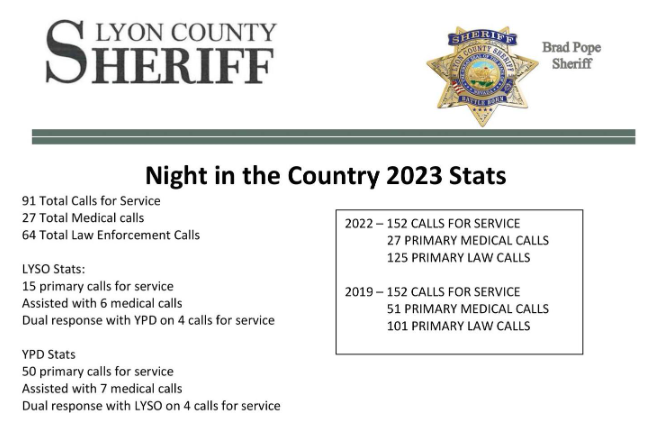
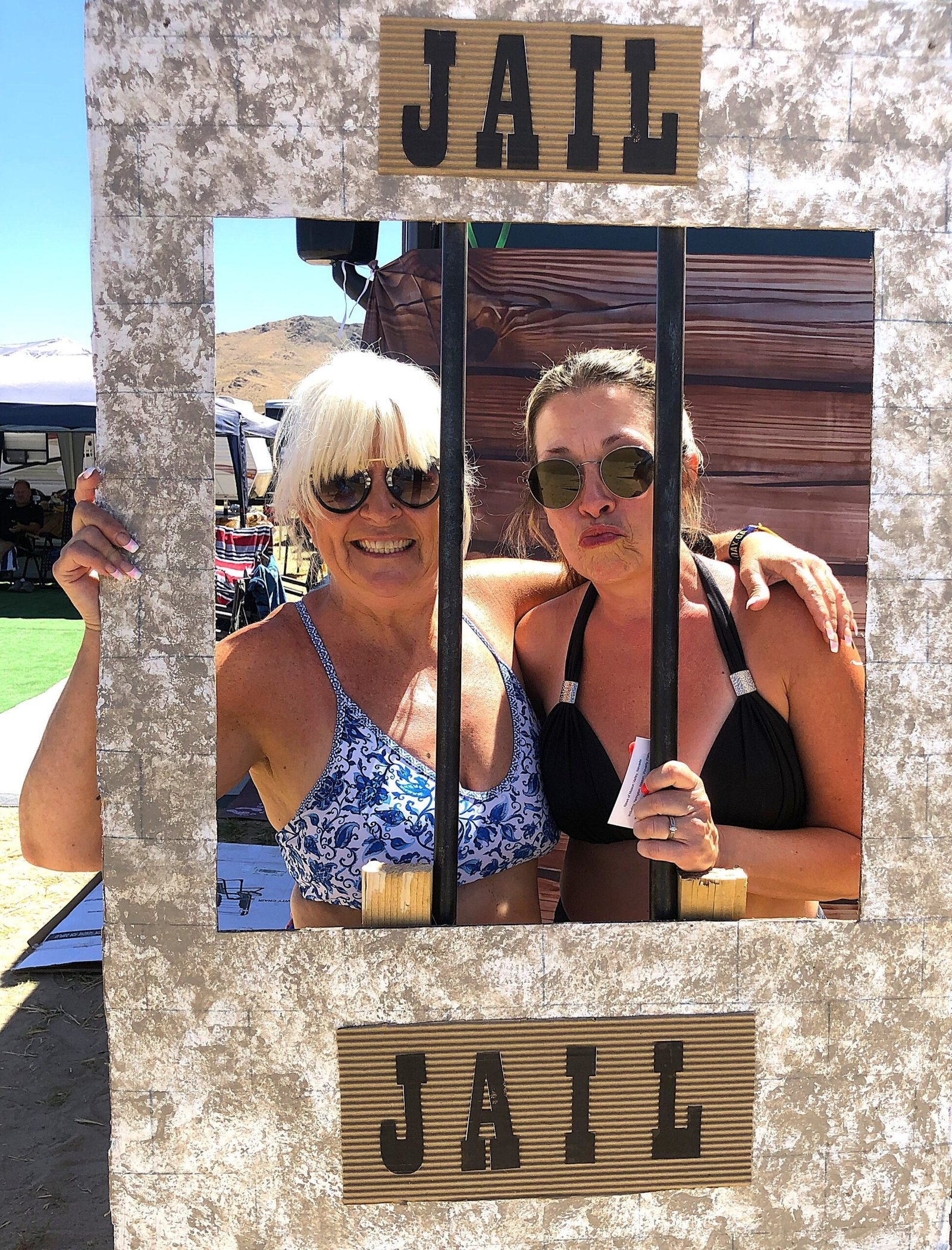

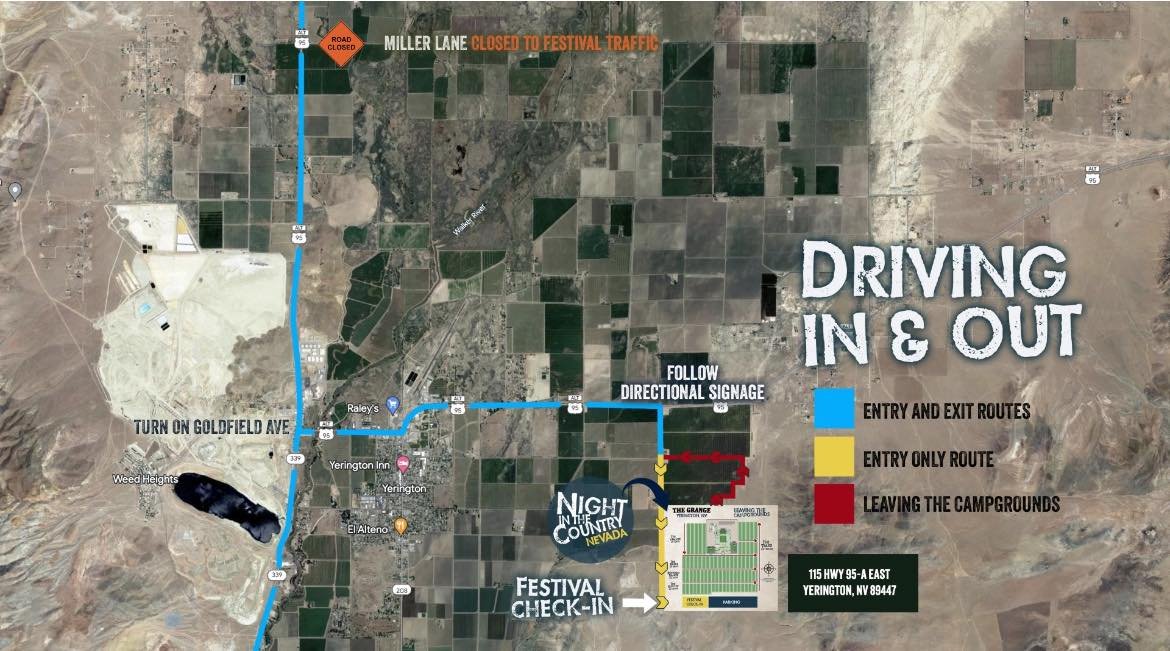
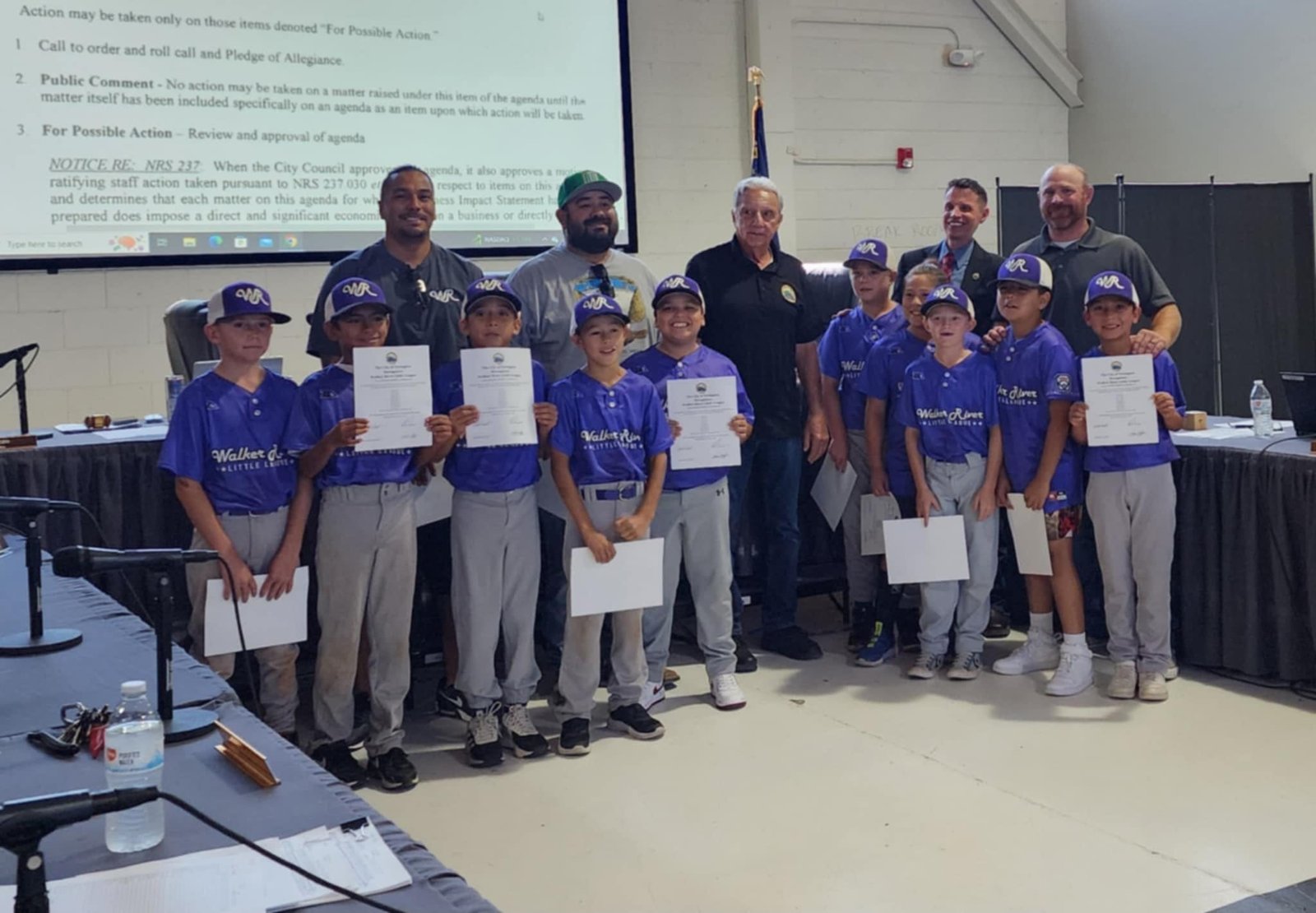
More Stories
LCSO Locates Paul Carnahan on Friday Morning After Overnight Shelter-in-Place Order for Neighborhood in Dayton
Yerington Police Department Shares Big News for Sgt. Coombs, Officer Smith, and K9 Officer Joker
Lyon County Sheriff’s Office – Nevada: Jail Bookings July 14, 2024 – July 21, 2024